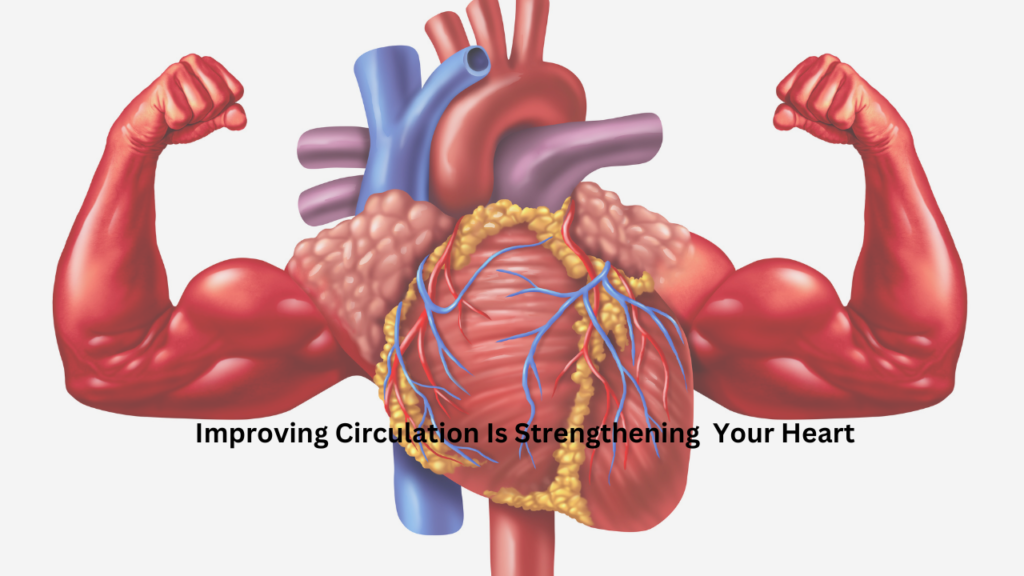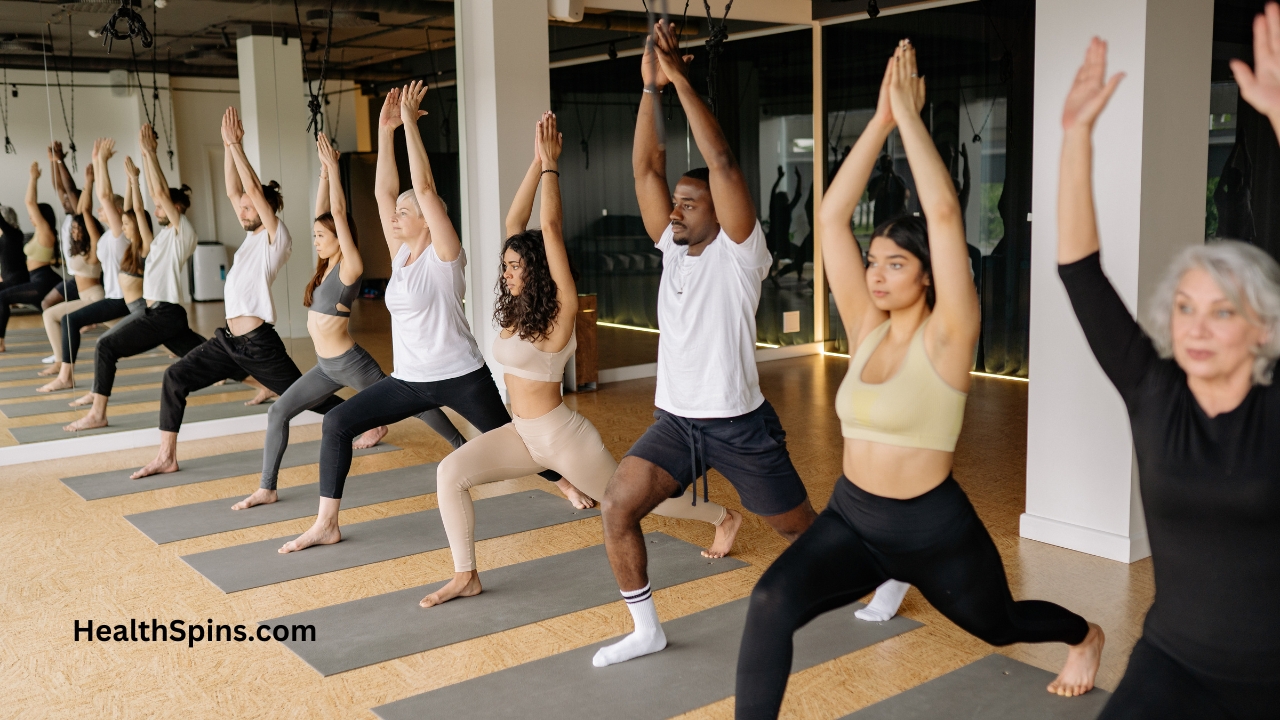Improving your blood circulation naturally comes with a multitude of benefits. When your blood is flowing freely through your body you get plenty of oxygen and essential nutrients to all your parts.
Learning how to improve circulation naturally leads to more energy and your organs work better. You need good circulation for heart health to reduce the risk of cardio diseases and healthy blood pressure.
Your skin will look much healthier and you’ll enjoy faster recovery from any injury or illness. Plus, you’ll think better, faster, and clearer as your brain is receiving enough oxygen. Clarity and focus will be enhanced to go along with more energy and a healthy life.
How To Improve Circulation Naturally?
So, let’s talk about how you can improve your circulation to enjoy all the benefits.
I’ve always been interested in my health and maintaining a healthy lifestyle. And one of the most significant ways I’ve found to feel better and stay on the healthy side of life is paying attention to my blood circulation.
These are the strategies that’s it’s all boiled down to. They are all important to boosting and maintaining a healthy cardiovascular system. I’m sure they will help you feel more energetic, focused, and enjoy better health.
7 Ways to Improve Blood Circulation

Regular Exercise
Engaging in regular physical activities like walking, jogging, or swimming helps to strengthen the heart and improve its efficiency in pumping blood. Consistent exercise also promotes the development of new blood vessels, enhancing overall circulation.
Healthy Diet
Consuming a balanced diet rich in fruits, vegetables, lean proteins, and whole grains supports vascular health and reduces inflammation. Nutrients like omega-3 fatty acids, found in fish and flaxseeds, are particularly beneficial for improving blood flow.
Staying Hydrated
Drinking enough water is essential for maintaining the volume of blood and preventing dehydration, which can thicken blood and hinder circulation. Proper hydration also helps in the efficient transport of oxygen and nutrients to cells.
Managing Stress
Chronic stress can constrict blood vessels and negatively impact circulation. Techniques such as deep breathing, meditation, and yoga can help relax the mind and body, promoting better blood flow.
Avoiding Prolonged Sitting
Sitting for extended periods can cause blood to pool in the legs, leading to poor circulation. Taking regular breaks to stand, stretch, or walk around can stimulate blood flow and reduce the risk of circulatory problems.
Maintaining a Healthy Weight
Excess weight can put additional strain on the heart and blood vessels, impairing circulation. Achieving and maintaining a healthy weight through diet and exercise can improve cardiovascular function and overall blood flow.
Avoiding Smoking
Smoking damages blood vessels and decreases circulation by causing plaque buildup in the arteries. Quitting smoking can significantly enhance vascular health and improve the efficiency of blood circulation.
Understanding Blood Circulation
Blood circulation is the process by which blood is pumped by the heart through blood vessels and veins, and circulated throughout the body. As you already know, the circulation is an essential process to life. It delivers oxygen and nutrients to the body’s organs and tissues, and removes waste products and carbon dioxide.
Role of the Heart
The heart is a muscle that pumps blood throughout your body. It is divided into four chambers: the right atrium, the left atrium, the right ventricle, and the left ventricle.
The right atrium receives blood from the body, while the left atrium receives blood from the lungs. The right ventricle pumps blood to the lungs, while the left ventricle pumps blood to the rest of the body. Your heart is the most critical component of the circulatory system because it’s the pump that makes it all happen.
Blood Vessels and Veins
Blood vessels are the tubes that carry the blood to all the different parts of your body.
They are divided into three types: arteries, veins, and capillaries.
- Arteries are the blood vessels that carry oxygen-rich blood away from the heart
- Veins are the blood vessels that carry oxygen-poor blood back to the heart
- Capillaries are the smallest blood vessels in the body, and they connect arteries and veins
Veins are responsible for returning blood to the heart, and they have a number of valves that help prevent blood from flowing backward. When these valves become weak or damaged, blood can pool in the veins, leading to conditions such as varicose veins.
Simple workouts like these can help improve blood circulation by strengthening the veins and improving the function of these valves.
The Circulatory System
The circulatory system is made up of the heart, blood vessels, and blood.
Blood is composed of red blood cells, white blood cells, plasma, and platelets.
- Red blood cells are responsible for carrying oxygen to the body’s organs and tissues
- White blood cells are responsible for fighting infections.
- Plasma is the liquid component of blood
- Platelets are responsible for blood clotting
The circulatory system is responsible for delivering oxygen and nutrients to the body’s organs and tissues, and removing waste products and carbon dioxide. Exercise can help improve blood circulation by increasing the flow of blood throughout the body, and improving the function of the circulatory system as a whole.
Factors Affecting Blood Circulation
Good blood circulation is vital for delivering oxygen and nutrients to the body’s organs and tissues. However, several factors can affect blood circulation, and it’s essential to understand them to improve our overall health.
Health and Age
Our health and age play a significant role in blood circulation. As we age, our blood vessels lose their elasticity, which can lead to restricted blood flow. Additionally, health conditions such as atherosclerosis, high blood pressure, and diabetes can cause damage to blood vessels, leading to poor circulation.
Smoking and Nicotine
Smoking and nicotine can also have a detrimental effect on blood circulation. Nicotine causes blood vessels to constrict, reducing blood flow to the body’s organs and tissues. Over time, smoking can cause damage to the blood vessels, leading to atherosclerosis, which is the buildup of plaque in the arteries that can restrict blood flow.
Diet and Nutrition
Diet and nutrition play a crucial role in maintaining healthy blood circulation. Consuming a diet high in salt, red meat, and saturated fats can lead to atherosclerosis, which can restrict blood flow. On the other hand, consuming a diet rich in fruits, vegetables, and whole grains can improve blood circulation and overall health.
Sedentary Lifestyle
A sedentary lifestyle can also have a negative impact on blood circulation. Sitting for extended periods can lead to restricted blood flow, particularly in the legs and feet. Regular exercise can help improve blood circulation by strengthening the heart and blood vessels, leading to better circulation throughout the body.
Consequences of Poor Circulation
When blood flow is restricted or slowed down, it can lead to a number of serious health problems. Here are a few of the most common consequences of poor circulation:
Stroke and Heart Attack
Poor circulation can increase the risk of stroke and heart attack. When blood flow to the brain is restricted, it can lead to a stroke, which can cause permanent brain damage or even death. Similarly, when blood flow to the heart is restricted, it can cause a heart attack, which can be fatal.
Varicose Veins and Blood Clots
Varicose veins are a potential manifestation of circulatory problems. Those knotted, distended veins emerging along the legs and feet indicate a serious venous disorder within the circulatory network. Vein & Vascular Institute
Poor circulation can also lead to varicose veins and blood clots. Varicose veins are swollen, twisted veins that are visible just below the surface of the skin. They are often found in the legs, but can occur in other parts of the body as well. Blood clots can form when blood flow is restricted and can be dangerous if they travel to the lungs or brain.
Peripheral Artery Disease
Peripheral artery disease (PAD) is a condition in which the arteries in the legs become narrowed or blocked, reducing blood flow to the legs and feet. This can cause pain, numbness, and weakness in the legs, and can lead to amputation if left untreated.
It is important to take steps to improve blood circulation in order to reduce the risk of these serious health problems. Regular exercise, a healthy diet, and quitting smoking are all effective ways to improve circulation and reduce the risk of these complications.
Conclusion
In conclusion, regular exercise is essential for good health, including heart and vascular health. Exercise helps improve blood circulation by increasing the diameter of blood vessels, allowing more blood to flow through them. This leads to a decrease in blood pressure and a reduced risk of heart disease and stroke.
Based on the research, the best exercises for improving blood circulation include aerobic exercise, strength training, and yoga.
- Aerobic exercise, such as walking, jogging, or cycling, increases the heart rate, which helps pump more blood around the body.
- Strength training, such as lifting weights, can increase muscle mass, which in turn helps to improve blood flow.
- Yoga can also be beneficial for blood circulation as it promotes relaxation and reduces stress, which can contribute to poor circulation.
It’s important to note that exercise alone is not enough to maintain good health. A healthy diet, adequate sleep, and stress management are also essential components of a healthy lifestyle.
